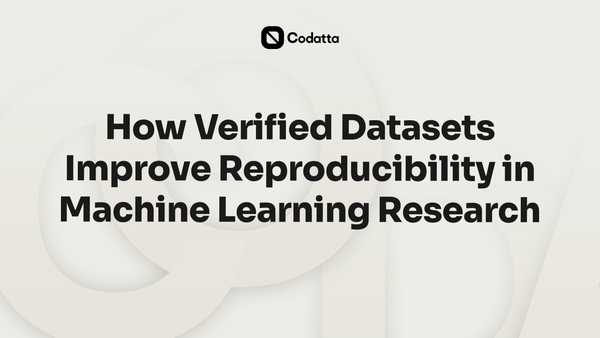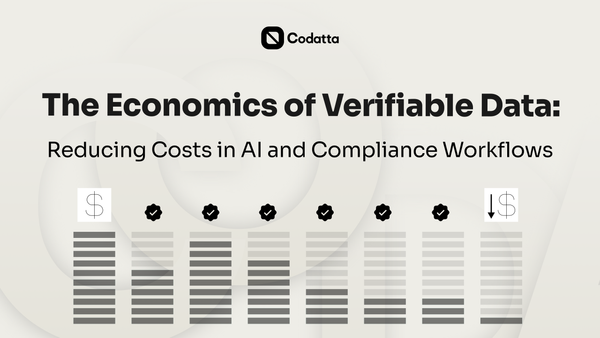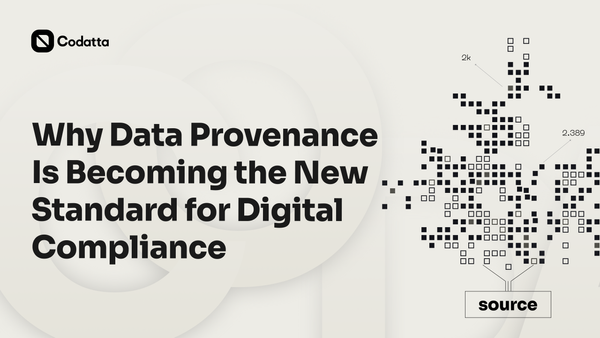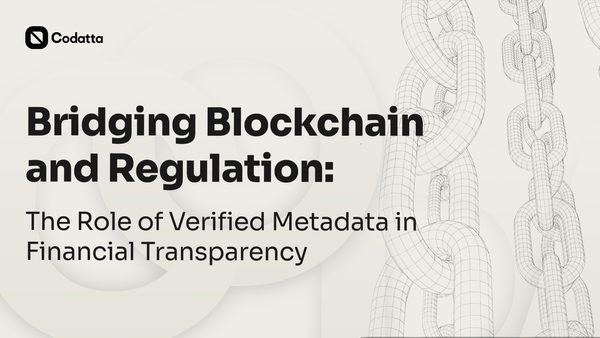The Role of Confidence Scoring in Data Reliability
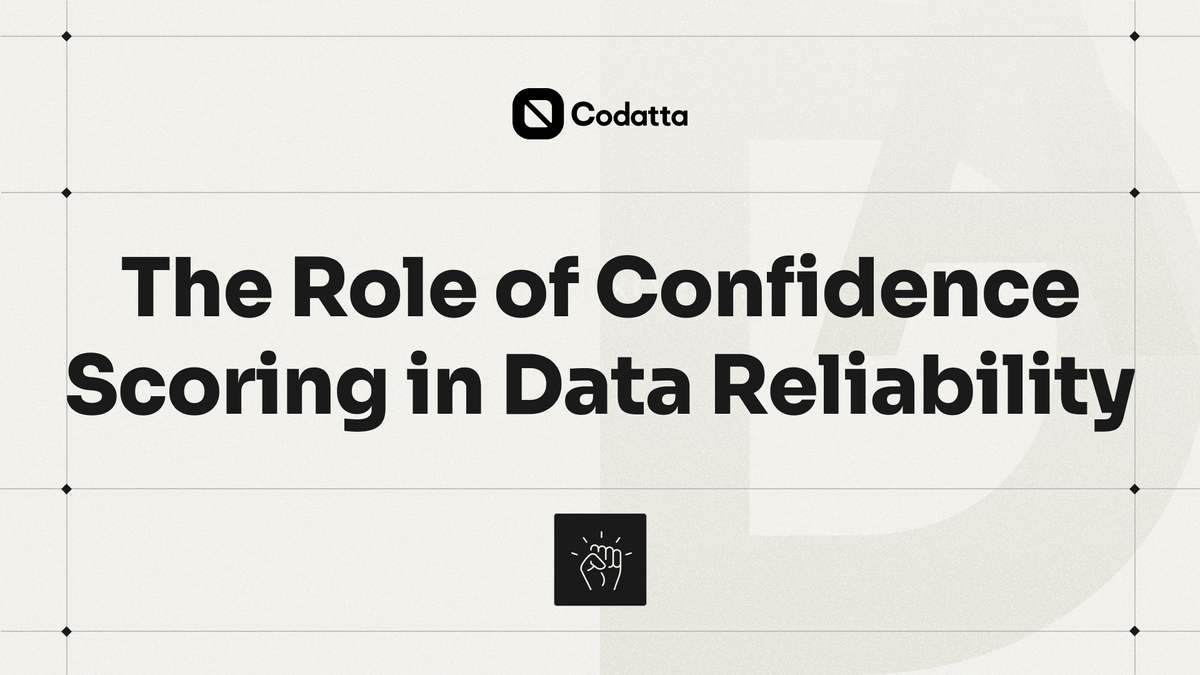
Reliable data is the foundation of every effective AI model. When datasets contain errors or unverified inputs, the output suffers, leading to false positives, flawed decision-making, and reduced trust in the system. This is why confidence scoring has become an essential metric for evaluating and quantifying the reliability of data contributions.
A confidence score assigns a measurable confidence level to each annotation or dataset entry. By setting thresholds for high confidence results, projects can reduce noise, identify weak points, and strengthen the quality of the information feeding into AI and blockchain applications. For contributors, it provides a clear standard of evaluation; for downstream users, it signals how much weight a decision should place on a given piece of data.
In this article, we explore how confidence scoring works, why it matters for large-scale dataset generation, and how it supports Codatta’s mission of building open and high-confidence data infrastructure.
What Is Confidence Scoring?
A confidence score is a numerical value that reflects the level of confidence an AI model, or a human contributor in a dataset, has in a given output or label. In practice, the score represents a measure of the likelihood that a data point or annotation is accurate. Confidence scores are typically expressed as a percentage or as a value between 0 and 1, where higher confidence scores signal greater reliability and lower confidence scores indicate uncertainty.
In data science and machine learning models, confidence scores play a central role in the decision-making process. For example, a model might assign a confidence score of 0.92 to suggest that a prediction is correct with high confidence, while a score of 0.35 would suggest a much lower confidence level. Setting a confidence threshold allows systems to filter results, reduce false positives, and improve overall accuracy.
This concept is not limited to model outputs. In crowdsourced annotation, individual contributions can be weighted by their associated confidence. Aggregating data from multiple annotators, then evaluating confidence scores across responses, produces an overall confidence score that helps determine which labels are actionable. Research in both machine learning calibration (Guo et al., 2017) and crowdsourced data quality (Snow et al., 2008) has shown how confidence scoring improves the reliability of our estimates and supports higher accuracy in large-scale workflows.
Why It Matters in Crowdsourced and Decentralized Data
Large-scale annotation often brings variability: some contributors provide accurate inputs, while others introduce errors or inconsistencies. In a decentralized setting, this variability becomes even more pronounced because the system relies on many independent participants.
Confidence scoring helps address this by assigning a measure of reliability to each data point. A score reflects how likely an annotation is correct, allowing the system to separate high confidence scores from low confidence ones. Setting a confidence interval or threshold allows projects to filter out noise, weight contributions more effectively, and provide transparency into how results are evaluated.
For users and applications, this means the ability to make more informed decisions. When confidence scores are utilized in blockchain metadata annotation, as in Codatta’s protocol, the process produces datasets where each label carries a clear signal of trust. This makes it possible to track reliability across annotations and align with principles of data transparency, such as the FAIR guidelines (Wilkinson et al., 2016), while also supporting blockchain standards for risk management and compliance outlined in FATF guidance.
Confidence Scoring in Practice at Codatta
Codatta applies confidence scoring as a core part of its protocol. Each annotation or submission carries a confidence score between 0 and 1, which reflects the likelihood that the data is accurate. A higher score would indicate stronger agreement or consistency, while a lower score would highlight uncertainty.
To improve the reliability of the confidence score, Codatta combines several mechanisms: contributor reputation, consensus across multiple annotators, and algorithmic checks that evaluate patterns in the distribution of confidence scores. This approach ensures that confidence scores matter not only as individual metrics but also as part of an overall system that weights contributions and strengthens data quality.
The result is a framework where confidence scoring plays a role across different domains. In blockchain metadata, food science, robotics, and AI training, confidence scores provide a consistent way to evaluate reliability and ensure that datasets remain actionable for real-world use.
Challenges and Considerations
While confidence scoring strengthens data reliability, it also comes with challenges. One issue is calibration: in some machine learning models, the calculation of a confidence score may reflect overconfidence, where the score indicates higher accuracy than the model can actually deliver. Research in calibration (Arxiv, 2021) shows that without adjustments, the confidence score reflects the model’s bias as much as its certainty.
In decentralized annotation, another challenge is the presence of cold-start users who have little history to evaluate. Their confidence scores may vary widely until enough data analysis has been collected to assess reliability. Domain-specific tasks add another layer, since a confidence score that looks strong in one area may not translate into the same level of accuracy in another.
For these reasons, clear task design and structured tutorials are essential. They help contributors understand what is expected, improve accuracy across annotations, and ensure that confidence scores provide a trustworthy basis for making informed decisions.
Conclusion
Confidence scoring makes data more trustworthy by giving every annotation or prediction an actual score that can be evaluated. When a confidence score is calculated, it provides AI systems and human reviewers with an estimated confidence that turns raw contributions into actionable signals.
For Codatta, this approach is central to building open and high-confidence datasets. The protocol ensures that data used in AI and blockchain applications is not only collected at scale but also validated through transparent measures of reliability. In this way, confidence scoring supports the development of systems where informed decisions can be made on the basis of verifiable data.

